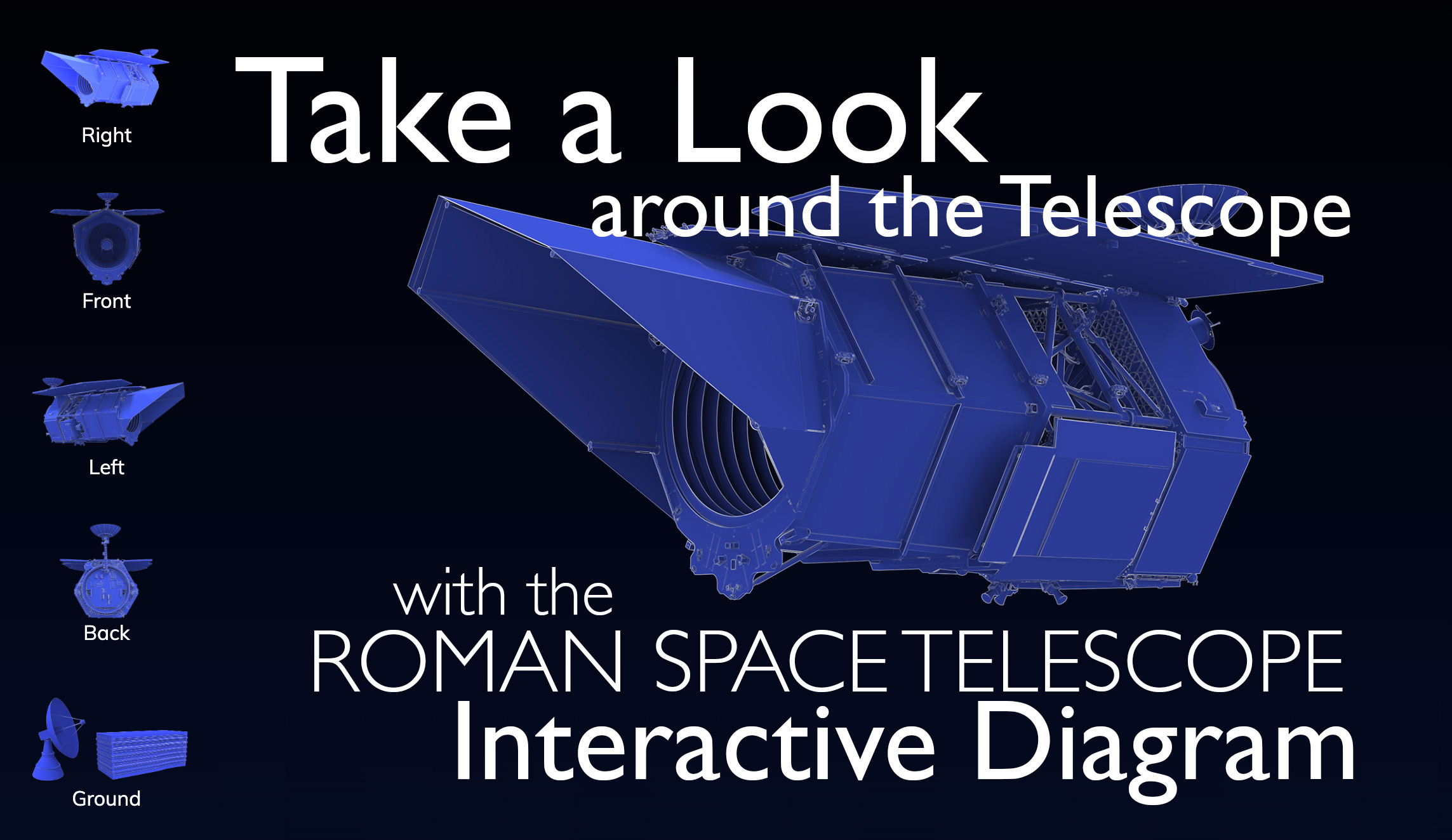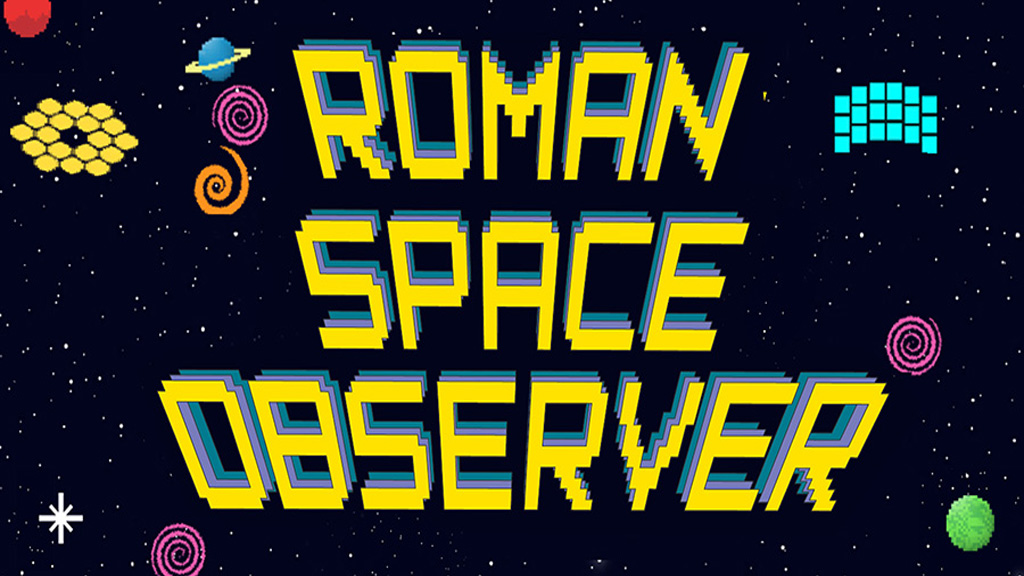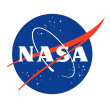Coronagraph Community Participation Program
2024 | 2022
2024
Unveiling the architecture of planetary systems through total and polarized intensity observations with Coronagraph
Modeling, Simulation, and Data Analysis Software Development for the Roman Coronagraph Instrument
Enabling Maximum Technical and Science Return of the Roman-Coronagraph with Precursor Observations and Simulations
Maximizing the lessons to be learned from the Roman coronagraph
Unveiling the architecture of planetary systems through total and polarized intensity observations with the Roman Coronagraph
PI: Anche, Ramya, University Of Arizona
Coronagraph Community Participation Program
The Nancy Grace Roman Space Telescope Coronagraph Instrument will facilitate multiwavelength total intensity and polarimetric observations of debris disks and planetary companions around nearby stars, achieving a contrast of ≲ 10−8for the first time. These observations will be crucial for constraining the dust composition, structure, and properties of the circumstellar debris disks, as well as understanding the atmospheric composition of the planetary companions. The Astro2020 decadal survey emphasizes the importance of detecting polarization signatures of disks and ocean glint from exoplanets in addition to direct imaging. While the primary goal of the Roman Coronagraph is to meet the TTR5 requirement and demonstrate its performance in best-effort modes, the coronagraphic mission may be extended beyond the TTR5 phase to explore unsupported modes. We propose to assist the coronagraph and current CPP teams in developing high-fidelity end-to-end simulations for the required, best-effort, and unsupported modes that will enable us to obtain multiwavelength total intensity and polarized observations of planetary systems around nearby stars, thereby enhancing the science returns from the Roman Coronagraph. This proposal addresses the four aspects of the Roman CPP proposal call related to the required modes A, D, E, and G, as well as two aspects pertaining to the unsupported modes H and J.
We propose to assist the coronagraph and current CPP teams in developing high-fidelity end-to-end simulations for the required, best-effort, and unsupported modes. These simulations will enable us to obtain multiwavelength total intensity and polarized observations of planetary systems around nearby stars, thereby enhancing the science returns from the RC. This proposal addresses the six aspects of the Roman CPP proposal call related to the required modes A, B, D, E, F, and G and two aspects of the unsupported modes H and J by...
1. Developing end-to-end multiwavelength science observation simulations for circumstellar debris disks and planetary companions, which are science targets of the TTR phase. This will include HLC bands 1, 2, 3, and 4, and Shaped Pupil Coronagraph (SPC) bands 1 and 4 in both imaging and polarimetry, accounting for all relevant noise sources and uncertainties.
2. Creating data reduction pipeline functions for best-effort, unsupported imaging, and polarimetry modes and integrating these functions with the corgidrp architecture.
3. Developing end-to-end observing scenario simulations with an injected circumstellar debris disk and planetary companion that are science targets of the Roman TTR phase for HLC Band 1 in case a dark hole cannot be formed in the observation phase as a risk mitigation strategy.
Our proposed approach combines a range of open-source disk and coronagraph simulation and post-processing tools we have developed over the past six years to support the coronagraph technology demonstration and potential science missions. These include physical optics propagation of coronagraph speckles, polarimetric radiative transfer modeling of disks and planets, speckle subtraction, disk extraction, and post-processing. All output generated from these simulations will be integrated with the Roman Corgi Sim architecture and processed using the CorGi data reduction pipeline. We will collaborate closely with the CPP observation planning and DRP teams to gather input on the science and reference targets selected for the technology demonstration phase. This simulation toolset will enable optimal science target selection and planning and prepare for future possible uses of the Roman Coronagraph; in addition to regular publication and presentations, we will lay the groundwork for community engagement by thorough and regular sharing of open-source software libraries, tutorials, input data, and simulation results.
Modeling, Simulation, and Data Analysis Software Development for the Roman Coronagraph Instrument
PI: Gersh-Range, Jessica, DM Telescopes LLC
Coronagraph Community Participation Program
The Coronagraph Instrument (CGI) on the Nancy Grace Roman Space Telescope is critically important to advancing our general understanding of high-contrast imaging in space and meeting the decadal recommendation that the next flagship be a 6m telescope with a coronagraph capable of detecting 25+ Earth-like planets. CGI will demonstrate key coronagraph technologies and operational strategies that have never before been used in space but will be needed. CGI’s success depends on a cooperative team effort among the participating scientists and engineers, the Community Participation Program (CPP). We propose Dr. Jessica Gersh-Range and Prof. N. Jeremy Kasdin (emeritus) as members of the team. Dr. Gersh-Range brings 5+ years of experience on the Roman project, having extensively supported the shaped pupil coronagraph (SPC) mask design efforts, contributed the flight design for the rotated bowtie SPC, and produced polarized Observing Scenario 11 time series simulations for the Hybrid Lyot coronagraph (HLC) and the wide-field-of-view (WFOV) SPC. Prof. Kasdin brings 10+ years of experience on the Roman project, having served on the Science Definition Team, as the CGI Adjutant Scientist, and as co-chair of the Roman Formulation Science Working Group.
We propose to serve the CPP Team and the broader Roman community by using our experience and our already-developed CGI-specific software tools to provide simulated datasets; assist in commissioning; update and/or improve the data analysis software; conduct activities that enable additional imaging modes, ensure the results have long-term value, and prepare for extended use of CGI; and engage the community and communicate results. In particular, our tools include a CGISim-based tool for generating time series datasets in all polarizations for the HLC, bowtie SPC, and WFOV SPC; a completely parametric algebraic model of the Roman pupil that can generate pupils with translation, clocking, and magnification errors by manipulating the individual edges of the struts, central obscuration, and tabs; and a modular set of algorithms for calculating the (Fresnel and Fraunhofer) optical propagation through a coronagraph with or without deformable mirrors (DMs) included and with or without wavefront control.
We propose a work plan shaped by the distinct phases of the period of performance. During the initial pre-launch phase, we propose to: (1) integrate features of our software tools into existing CPP code as needed and produce polarized datasets for testing the data reduction pipeline (topics E, H); (2) update and/or improve the data analysis software by incorporating standard techniques for planet detection and photometry (topics G, H); (3) create a working group that identifies and prepares for potential issues that may degrade CGI’s performance (topics F, G, H, J); and (4) begin preemptively evaluating factors that may lead to a mismatch between the operational and modeled performance (topics F, G, H). During the primary mode commissioning phase, we propose to: (1) update the assumed error values in the coronagraph model to reflect observed behavior (topics E, F, H); (2) produce updated simulated images for the primary observing mode (and additional best-effort and unsupported modes as time permits) to compare against the data and verify that CGI is performing as expected (topics E, F, H); and (3) complete the analysis of factors that may lead to a mismatch between the operational and modeled performance. During the operations phase, we propose to: (1) investigate the effectiveness and potential benefits of restricting the corrected dark hole (DH) area to the spectroscopic slit of the bowtie SPC (topic J); (2) produce updated time series datasets to study what can be learned without digging a DH in the event of significant DM degradation (topics E, H, J); and (3) improve the data analysis software by incorporating additional community-requested algorithms as time permits (topics G, H, I).
Enabling Maximum Technical and Science Return of the Roman-Coronagraph with Precursor Observations and Simulations
PI: Hom, Justin, University Of Arizona
Coronagraph Community Participation Program
The Roman-Coronagraph will be the first visible light high contrast instrument in space capable of high order wavefront sensing and control, critical for maturing techniques for Earth-like exoplanet direct imaging with the Habitable Worlds Observatory (HWO). These technologies require a process known as “digging” a dark hole of high contrast. To both dig and maintain the dark hole contrast, all standard science observing sequences require cyclical observations of the science target and a bright, nearby reference star. Reference star criteria, however, are extremely strict, limited to single bright stars with small resolved diameters. The presence of known binary companions disqualifies most candidates, leaving only 40 options that have yet to be fully vetted for companions. Thorough vetting is therefore critical for the ultimate selection and scheduling of both technical and science targets, as selecting an inadequate reference star will cause dark hole digging to fail and equate to several hours of lost time counted against the guaranteed 90-day Observation Phase. The sky distribution of reference stars directly dictates the scheduling of science targets, meaning adequate sky coverage is needed to ease scheduling flexibility.
Other reference star properties may also limit the maximum achievable contrast without causing dark hole digging to fail. Thresholds on companion brightness and separation have not been thoroughly quantified, and the impact of faint companions outside the dark hole is not well understood. Differences in stellar diameter between science and reference along with the presence of diffuse circumstellar dust may also negatively impact the achievable contrast. Understanding the impact of these factors, along with the complexities of mission scheduling and the depth of a given candidate’s companion vetting campaign, necessitate an informed metric for pairing reference and science targets to optimize the achievable contrast and, therefore, science return of the mission.
We propose to conduct a thorough reference star vetting campaign utilizing archival, approved, and future observing programs. The campaign will utilize datasets from an exhaustive list of ground-based interferometric and high contrast imaging instrumentation operating from the visible to near-infrared. The combination of contrasts across multiple instruments and wavelengths will allow us to identify problematic companions and set deep companion rejection limits at separations greater than 2 mas and contrasts approaching the TTR5 requirement. We will also create high fidelity observing simulations with existing tools to quantify impact on contrast from faint companions, stellar diameter mismatch, and circumstellar dust. In addition to determining the final list of suitable reference stars for the Roman-Coronagraph, we will derive a metric for selecting the optimal reference star for a given science sequence based on the results of our simulations, the depth of rejection limits, and the flexibility of scheduling. After launch, our program will focus on science performance assessment of the delivered reference star list and vetting down to 10-8 contrast with the Roman-Coronagraph itself, allowing us to compare the results of our simulations to on-sky performance while simultaneously vetting candidates for extended mission Coronagraph observations and HWO. The reference-science pairing metric will be amended pending analysis of on-sky data. Other ground-based observing campaigns for a reserve list of reference stars not satisfying initial criteria will also be initiated to both quantify thresholds for dark hole digging and to ease scheduling flexibility for best-effort modes. Our program deliverables will be available to the community and are critical for reducing mission risk and optimizing mission efficiency and science return while also informing planning efforts for HWO.
Maximizing the lessons to be learned from the Roman coronagraph
PI: Macintosh, Bruce, University Of California, Santa Cruz
Coronagraph Community Participation Program
The driving reasons for the existence of the Roman Coronagraph technology demonstrator is as a pathfinder for a future coronagraph with full science capability - now embodied in the Habitable Worlds Observatory. This provides an extraordinary opportunity to learn lessons that will optimize HWO’s scientific goals, design, and (ultimately) operations.
Before launch, the original Formulation Science Working Group team, the coronagraph project team, and now the CPP have developed extensive models of expected performance, ranging from analytic contrast budgets to full-physics STOP and coronagraph models. Similar models are now being used in the design of HWO; long-lead decisions that shape the future of $10B Great Observatory will be made on the bases of these tools.
We propose to work with the project team to ensure that Roman observations yield the most possible information to assess, validate, and refine those models. We will help prioritize target selections based on what each will tell us - from single-star observations to well-known companions to potential exoplanet detections, each exercises the instrument in a different way and each on-sky observation must be justified by new information it brings. We will work with the CPP to develop a rigorous framework for selecting between proposed observations, with well-defined criteria and process for updating targets based on past results. Observing strategies and targets will be optimized to explore instrument properties across a range of parameter space that in turn explores different terms in the contrast budgets and models. Finally, we will work with the data pipeline team on the tools needed to assess performance, including analysis of both images and telemetry. This will also inform observations with scientific objectives such as studies of exoplanets or disks – a well-motivated error framework will provide robust uncertainty and covariance estimates that are critical to modeling science targets, while in turn the comparison of those targets to models (from orbit propagation to planetary atmospheres) helps validate the estimates of uncertainties. Overall, the goal is to help plan and execute observations to ensure CPP teaches us the most for future missions.
2022
Coronagraph Instrument testing and performance evaluation in single- and binary star modes
Calibrating Roman’s Coronagraphic Imaging and Polarimetry Modes
Data driven investigations of the Coronagraph Instrument as a starlight suppression yardstick
Roman’s Giants: Jovian Exoplanet Modeling and RCI Detectability
Target Selection and Observation Modeling Tools for Coronagraph Tech Demo and Beyond
Imaging and Characterizing Exoplanets with the Roman Coronagraph and Open-Source Tools
Circumstellar Dust with the Roman Coronagraph
Coronagraph Instrument testing and performance evaluation in single- and binary star modes
Ruslan Belikov / NASA – Ames Research Center, PI
Eduardo Bendek / Jet Propulsion Laboratory, Institutional PI
Dan Sirbu / NASA – Ames Research Center, Co-I
We propose to assist the Roman Coronagraph Instrument team with laboratory testing, as well as performance predictions, in both single as well as multi-star modes. The main objectives of this proposal are to: (1) gain even greater confidence in reaching the Threshold Technology Requirement (TTR); (2) advance performance capability and identify opportunities beyond TTR, especially ones that are enabled by the multi-star contributed mode. In order to achieve these objectives, our work will consist of three inter-related parts: pure single-star mode; MSWC-assisted single star mode; and multi-star mode. We describe these in what follows.
(1) We will work with the Roman Coronagraph Instrument team to test and advance the performance of the pure single star mode (on the OMC test bench, or the new planned bench for the flight instrument). In particular, we will assist with testing and optimizing baseline single-star algorithms, finding limiting factors, and gaining a better overall understanding of technical subtleties of operating the Coronagraph Instrument. In addition, we will contribute computation efficiency improvements based on algorithms we’ve developed, such as semi-analytical approximations (e.g. small-star approximation), zoomFFT, etc. The exact details of this work are meant to be flexible and adapt to the needs of the Roman Coronagraph Instrument test program. We will leverage our experience working with the OMC test bench over the past 2 years, both in HLC single-star mode, as well as SPC single- and multi-star modes.
(2) We will take advantage of synergies with our MSWC project to maximally benefit standard Coronagraph Instrument single-star modes. In particular, the Coronagraph Instrument models we developed for binary star sources are also useful for analyzing background sources contaminating single-star targets. This is valuable because the Coronagraph Instrument observation time is limited, so we cannot afford to spend time on targets that turn out to be contaminated by off-axis sources. The same models are also useful to more accurately assess the viability of binary stars as single-star mode targets. In addition, we will study several techniques that enhance single-star mode operation by using information or metrology provided by the MSWC mask. The basic idea is to test certain aspects of MSWC which happen to be applicable to single-star modes. This reduces the risk of TTR, supports several Coronagraph Instrument Technology Objectives, and helps enable performance beyond TTR.
(3) Finally, we will further develop and test the multi-star mode for flight observations, leveraging and complementing the work we are doing as part of the ISFM program, and in particular bring MSWC is as close to flight-ready as possible, not only in terms of performance, but also in terms of compatibility with flight software. We will coordinate with the Roman Coronagraph Instrument flight software team to develop MSWC code to flight-readiness. Also, in case the Coronagraph Instrument allows ground testing of instrument modes other than HLC, we plan to be ready to perform a test with flight hardware. We will also incorporate our findings and characterizations of flight components into MSWC mode performance estimates.
The primary significance of this work lies in gaining further confidence in achieving the Coronagraph Instrument TTR and Technology Objectives, which is of critical importance to ensure the Coronagraph Instrument success as a technology demo. In addition, the performance enhancements we described above have the potential to make the Coronagraph Instrument a powerhouse of exoplanet science in its own right.
Calibrating Roman’s Coronagraphic Imaging and Polarimetry Modes
Max Millar-Blanchaer / University of California – Santa Barbara, PI
The Roman Space Telescope Coronagraphic imaging modes promise to demonstrate exciting new technologies that will set the stage for NASA’s next great observatory, the Habitable Worlds Observatory. Achieving both the baseline requirements and meeting the “best-effort” goals will require careful target selection and a sophisticated calibration program. Here we propose a Roman Coronagraph Community Participation Program contribution that will cover four main aspects of the call for proposals: B, E, F, H and I. Our team will focus on the development of detailed calibration simulations, calibration analysis toolkits, and the development of software for applying calibrations to in-flight calibration data. These tasks will be critical for the successful achievement of the primary TTRL5 mission success requirement. A second major component of our proposed program will be to focus on Roman’s polarimetry mode. The Roman polarimetry mode will provide a unique opportunity to demonstrate high contrast polarimetry at contrasts that are not achievable from the ground, opening the doors to future polarimetric studies of not only disks, but planets as well. We will develop a polarimetric commissioning and calibration plan, complete with image processing analysis software. Calibration target vetting and precursor observations for the polarimetry mode will be included where necessary. Our team brings a breadth of experience in the commissioning, characterization, calibration and use of both ground-based and space-based high contrast imaging instruments. Furthermore, the PI is an expert in the calibration and use of high-contrast polarimetric instrumentation. Given the breadth of expertise and experience of our team, should the project need our efforts to focus on other topical areas or should resources prevent a focus on the polarimetry mode, there are many other topical areas the team is interested in.
Data driven investigations of the Coronagraph Instrument as a starlight suppression yardstick.
Laurent Pueyo / Space Telescope Science Institute, PII
Objectives:
We will work with the Roman Coronagraph Instrument project to maximize the return of the Coronagraph Instrument technology demonstration mission, and transfer knowledge to the Astro2020 recommended Habitable World Observatory (HWO). We will do so by carefully analyzing ground test data during the initial period of performance.
Background:
The Coronagraph Instrument is the only flight demonstrator of a suite of technologies that are critical to exo-earth detection and characterization with HWO. For instance, lessons learned from the Coronagraph Instrument ground testing will inform the experimental design of system level technology demonstrations that will occur under the purview of the Great Observatories Maturation Program (GOMAP). Successful Coronagraph Instrument operations during the technology demonstration phase will define the baseline exoplanet imaging observing sequence for HWO during formulation (Phase A). Because the Coronagraph Instrument is a class D instrument, with reduced assurance standards permitted, the Coronagraph Instrument I\&T data might not be as thoroughly scrutinized as was done for previous NASA flagships such as JWST. Our proposed CPP program will augment existing Coronagraph Instrument project resources to characterize performance and optimize the observations during the technology demonstration phase. We will also extrapolate the Coronagraph Instrument results to HWO.
Methods:
We propose to conduct a suite of data driven investigations based on the Coronagraph Instrument ground test measurements to inform HWO technology maturation and mission formulation plans, and maximize the return of the Coronagraph Instrument the technology demonstration. This will include:
• Evaluating raw contrast model uncertainties using ground tests data, and establishing best practices to set Model Uncertainty Factors (MUFs) for HWO error budgets.
• Quantifying the relationship between model uncertainties and WFS\&C convergence time and identifying the tall poles in the instrument’s configuration. These will be precious lessons learned to design GOMAP demonstrators and preliminary HWO architectures during mission formulation.
• Measuring the wavefront noise rejection function of the Coronagraph Instrument’s WFS\&C subsystems –either using the LOWFS or the science camera. We will then use these measurements as yardsticks to quantify how much ground GOMAP needs to cover in order to demonstrate HWO compatible wavefront stability.
• Developing a target list composed of a wide range of companions, from stellar binaries to self-luminous planets. We will build an empirical flight contrast ladder that will be essential to demonstrate the Coronagraph Instrument’s science capabilities during its commissioning and technology demonstration phases.
• Designing observing sequences for the Coronagraph Instrument’s technology demonstration phase that are as informative as possible for HWO.
Significance:
This work will help optimize the Coronagraph Instrument observations during the technology demonstration phase, which will in turn pave the way towards compelling Coronagraph Instrument observations later in the mission. Such successful observations will provide a unique opportunity to anchor HWO yield predictions with the Coronagraph Instrument data.
Roman’s Giants: Jovian Exoplanet Modeling and RCI Detectability
Tyler Robinson / University of Arizona, PI
The Roman Coronagraph Instrument (RCI) aboard NASA’s Nancy Grace Roman Space Telescope is a critical technology demonstration to guide many future NASA endeavors in high-contrast imaging. The stated RCI Threshold Technical Requirement (TTR) represents a challenge that can only be met through collaborative efforts spanning engineers, instrument scientists, and exoplanet modeling experts. To enable target selection and prioritization, and to empower future interpretation of RCI results, we propose to execute a novel grid of giant exoplanet atmospheric models, spectral simulations, and inverse studies. The atmospheric models and associated spectral simulations will be guided by likely RCI targets and anticipated planetary properties. Our inverse studies will use the planned spectral models to demonstrate the range of exoplanet atmospheric science that can be completed with varying levels of RCI observing time commitment.
We anticipate active engagement with a broader CPP Team to enable improved star/exoplanet/disk/instrument scene models and to best understand the connections between planned instrument performance, the likelihood of TTR success, and the potential for first-of-its-kind exoplanet atmospheric science that would prove foundational for the forthcoming Habitable Worlds Observatory. Our proposed efforts are relevant to the CPP topical area of “[m]odeling astrophysical targets” and, as stated in the call, the efforts are, then, relevant to NASA’s Science Plan. More specifically, our RCI-focused modeling studies enable understanding of the universe and a search for life elsewhere (2022 Strategic Plan, Objective 1.2) and are specifically designed to enable new space technologies (2022 Strategic Plan, Objective 3.1) within NASA’s Decadal Survey-guided “balanced science program” (2020-2024 NASA Science Plan, Strategy 1.1).
Target Selection and Observation Modeling Tools for the Roman Coronagraph Technology Demonstration and Beyond
Dmitry Savransky / Cornell University, PI
The Space Imaging and Optical System Laboratory (SIOSlab) at Cornell University has been actively supporting the Nancy Grace Roman Space Telescope Coronagraph Instrument since pre-Phase A activities. We currently maintain two open-source, community resources: a one-to-one port of the internal JPL Exposure Time Calculator (ETC) for the Roman coronagraph (available as a module of the publicly distributed EXOSIMS software framework) and a publicly accessible database of known planetary companions that could potentially be imaged by the Roman coronagraph (the Imaging Mission Database). We propose a suite of activities under the Coronagraph Community Participation Program aimed to further develop and expand both of these resources, and specifically targeting topic areas A (modeling of astrophysical targets), B (selecting suitable observing targets), D (planning observations) and M (enabling activities for possible further use of the coronagraph).
Specifically, we will continue development and maintenance of the EXOSIMS Roman coronagraph ETC to account for improvements in the instrument model and new characterizations of the flight instrument. For each ETC update, we will recompute detection probabilities for all targets in the Imaging Mission Database. The database will also continuously be updated with new targets as they are discovered, and with new orbital fits for current targets as they appear in the literature. We will augment the existing photometric model grids used in the database to provide better predictions of known planet detection probabilities with the coronagraph, and will add optimal observation times for all targets observable by the coronagraph. Optimal observing times will be computed by applying new methodologies, recently published by our group, for the use of radial velocity data to optimize imaging observations. We will also expand these methodologies to work with all relevant targets in the database. Finally, we will continue development of the EXOSIMS blind search simulation capabilities for the Roman coronagraph to prepare for any potential science program following a successful technology demonstration, and similarly update the blind search (and unknown companion) search targets in the database.
In addition to these specific activities, the PI and members of the proposing team have broad expertise and experience in coronagraphic exoplanet imaging and instrumentation, and could support multiple other activities, as required by the final makeup of the CPP team.
Imaging and Characterizing Exoplanets with the Roman Coronagraph and Open-Source Tools
Jason Wang / Northwestern University – Evanston, PI
I propose to join the Roman Coronagraph team to assist in the target selection, data simulation, data reduction, instrument performance characterization, and science demonstration, with a focus on adapting current open-source tools to support the Roman Coronagraph. I am a lead developer of two open-source tools popular in the community: “pyKLIP” for stellar point spread function subtraction and exoplanet characterization and “orbitize!” for Bayesian orbit fitting of imaged exoplanets. I propose to add functionality to these packages so that they can be used to assist in the technology demonstration activities. This will ensure open and reproducible science and will mature the tools to analyze visible-light coronagraphic data from space.
In the area of target selection, “orbitize!” can be used and upgraded to predict the locations of known imaged planets and planets detected through indirect methods such as Gaia astrometry. This will allow us to know which objects will be in the Coronagraph field of view and which need ground-based follow-up to refine their orbits. In the area of data simulation and reduction, I will work on optimizing “pyKLIP” for Roman Coronagraph data. pyKLIP is widely used for coronagraphic data from ground-based telescopes and JWST and was the top performing algorithm in the Roman Exoplanet Imaging Data Challenge, detecting faint planets that other algorithms did not. Using simulated data, I will further improve pyKLIP such as by using orbital constraints as priors in the detection framework and by adapting it for the spectroscopic mode of the Coronagraph. In the area of instrument performance characterization, I have a decade of experience calibrating and characterizing high-contrast instruments such as the Gemini Planet Imager and the Keck Planet Imager and Characterizer, and will bring my expertise to the Roman Coronagraph. I will create tutorials and pipelines based on pyKLIP to easily assess the final planet sensitivity of the Roman Coronagraph in simulation, in the lab, and in space. I can also help develop astrometric and spectrophotometric calibration strategies for the instrument. In the area of science demonstration, I will create recipes and pipelines to measure the photometry, astrometry, orbits, and spectral properties of exoplanets with simulated and real data from the Coronagraph. For reflected light planets, orbital and photometric information are covariant, and I will add functionality to “orbitize!” to include constraining the phase function of reflected light planets in orbital fits. In all these cases, in addition to contributing to the Coronagraph Instrument’s technology demonstration, the software modifications would be accessible to the entire astronomical community in well-established software packages, and the same functionality can be used in future space missions such as the Habitable Worlds Observatory.
Circumstellar dust: A nexus of performance, calibration, and science potential in the Roman coronagraph technology demonstration
Schuyler Wolff / University of Arizona, PI
Planetary system architectures include rocky planets, gas giant planets, and dusty debris. All three components will appear in high contrast images from NASA’s future Habitable Worlds Observatory (HWO). Along with its key flight demonstration of coronagraphy with precision wavefront control, the Roman Coronagraph (RC) will advance our understanding of how well HWO will be able to study these three elements of exoplanetary systems. The instrument should not only produce the first direct detection of a giant planet in reflected starlight, but can also provide unprecedented views of the spatial structure and scattering properties of circumstellar dust. The strong potential of RC polarimetry allows disk modeling degeneracies to be broken, allowing for the extraction of information on the size, composition and porosity of the scattering particles. We suggest that the Roman Coronagraph Team work to fully define the instrument’s science potential for exozodi and debris disk studies.
Our proposed involvement in the RC Team focuses on two areas. The first focus area is to use the needs of exozodi and debris disk imaging to motivate investigations of instrument performance and calibration for extended sources. 1.) By fully exercising the built-in polarimetry mode of RC in Band 1 and Band 4, we will learn how well its instrumental polarization can be modeled, the limits to polarization sensitivity including the efficacy of polarimetric differential imaging at very high contrast levels, and the accuracy of its polarimetric calibration. From such work the RC team can gain confidence that polarized light can be a science tool for RC and eventually HWO, and not an optical design issue that curtails high contrast performance. 2.) By investigating the limits to LOWFS operation, our intended studies will map out the parameter space of dark hole contrast versus target star brightness - defining the full extent of what RC and eventually HWO can achieve in the way of disk and exozodi detections in the solar neighborhood. 3.) Building from the PI’s ongoing involvement in JWST coronagraphy, we will provide a customized pipeline module for analyzing tech demo data of extended disk sources.
Informed by the results of the above, our second focus area is to develop options for two potential community projects that would figure into a decision on RC utilization beyond the tech demo phase. 4.) By leading the RC team and broader community in the definition and preparation of a ready-to-execute exozodi survey program, we will enable a timely NASA HQ decision on whether the benefits of an exozodi survey would justify the required resources, reducing the risk to the primary Roman Science mission and (should the survey go ahead) to HWO mission lifetime requirements. 5.) By building a database of disk models for the known debris disks accessible to RC, we can gain confidence that tech demo observations of extended sources will achieve their goals while simultaneously laying the groundwork for a possible future survey of inner warm debris disks with RC.
The success of future facilities like the Roman Coronagraph will require scientists with both a working knowledge of the technical challenges of high contrast imaging and an understanding of the fundamental research questions. We believe that our expertise in instrument commissioning and calibration, in disk science and disk modeling, and in data pipeline development will serve the community and the Roman Coronagraph Team.











